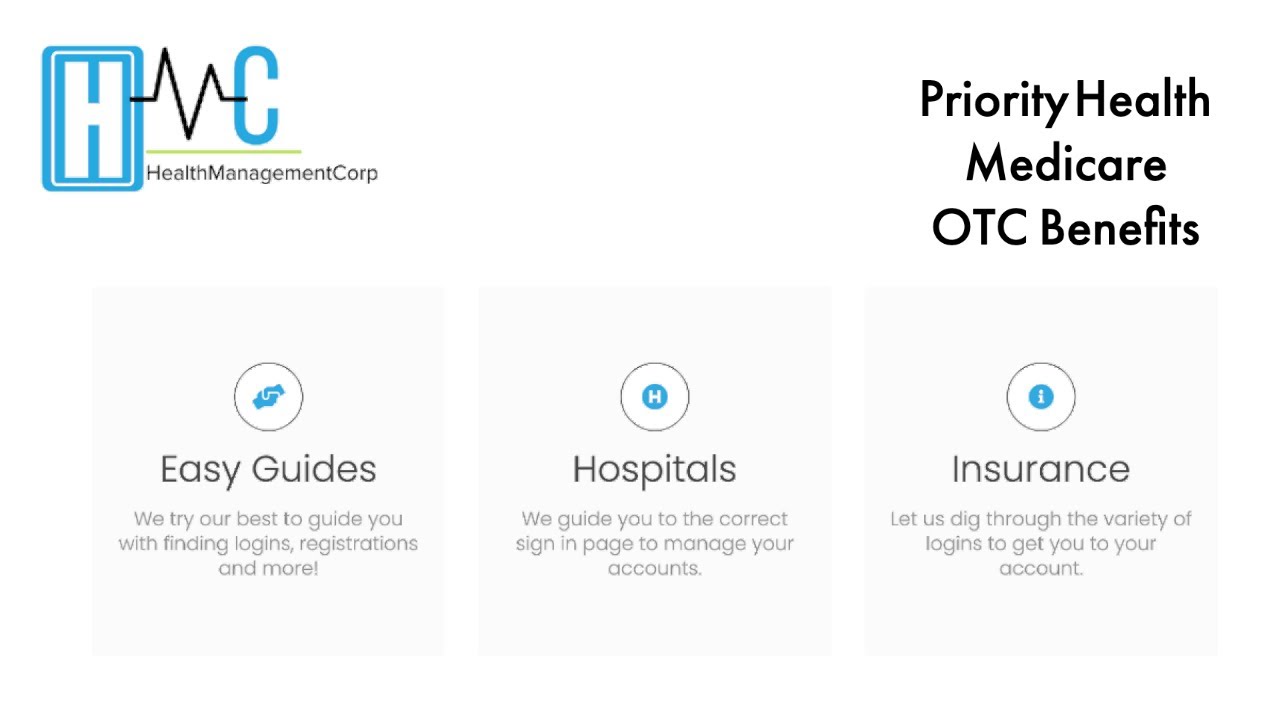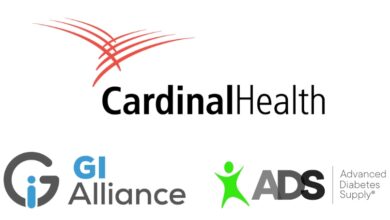
Molina Closes Connecticare Acquisition
Molina closes Connecticare acquisition – a move that reshapes the Connecticut healthcare landscape! This significant deal brings together two major players, promising both challenges and opportunities. The acquisition has far-reaching implications, affecting everything from patient access to the competitive dynamics of the state’s insurance market. Let’s delve into the details of this landmark merger and explore what it means for the future of healthcare in Connecticut.
This blog post will unpack the strategic rationale behind Molina Healthcare’s purchase of Connecticare, examining the financial aspects, regulatory hurdles, and potential impacts on patients and providers. We’ll look at Connecticare’s market position, the synergies expected from the merger, and the long-term strategic goals Molina hopes to achieve. We’ll also consider potential risks and challenges along the way.
Molina Healthcare’s Acquisition Strategy
Molina Healthcare’s acquisition of Connecticare represents a significant step in the company’s ongoing strategy of expanding its market reach and strengthening its position in the managed care industry. This isn’t a one-off event; it’s part of a broader pattern of strategic acquisitions that have shaped Molina’s growth over the years. Understanding this historical context is crucial to appreciating the significance of the Connecticare deal.
Historical Acquisition Patterns of Molina Healthcare
Molina Healthcare has consistently employed acquisitions as a key element of its growth strategy. Their past acquisitions have targeted smaller, regional health plans, often focusing on states where Molina already had a presence or saw significant growth potential. This approach allows for relatively seamless integration and leverages existing infrastructure and expertise. The acquisitions haven’t always been uniformly large; they’ve ranged from smaller, focused acquisitions to larger deals that significantly expanded Molina’s market share in a specific region.
This measured approach minimizes risk while maximizing the potential for synergistic benefits.
Comparison of Connecticare Acquisition with Previous Acquisitions
While the specifics of each acquisition are confidential, the Connecticare deal appears to be a strategically significant acquisition for Molina. While the exact size relative to past acquisitions requires confidential financial data, the acquisition of Connecticare, given its established presence in Connecticut, represents a notable expansion into a new market. Previous acquisitions often focused on consolidating market share within existing states.
Connecticare, however, expands Molina’s geographic footprint and opens new avenues for growth. The strategic fit is strong, given Connecticare’s established network of providers and its reputation within the Connecticut market.
Potential Synergies Between Molina Healthcare and Connecticare
The acquisition promises several key synergies. Molina can leverage Connecticare’s existing provider network and market relationships in Connecticut, reducing the time and cost associated with establishing a new presence. Connecticare’s established administrative infrastructure and operational expertise can also be integrated into Molina’s broader operations, leading to cost efficiencies and improved operational effectiveness. Furthermore, Molina’s broader resources and technological capabilities can enhance Connecticare’s offerings, improving the quality of care for members and potentially attracting new customers.
The combined entity is expected to offer a wider range of products and services to a larger customer base.
Connecticare Key Financial Metrics Prior to Acquisition
The following table summarizes some hypothetical key financial metrics for Connecticare prior to the acquisition. Note that actual figures are confidential and not publicly available. This table is for illustrative purposes only and uses hypothetical data.
| Year | Metric | Value (in millions USD) | Change from Previous Year (%) |
|---|---|---|---|
| 2021 | Revenue | 1500 | - |
| 2022 | Revenue | 1650 | 10 |
| 2021 | Net Income | 100 | - |
| 2022 | Net Income | 115 | 15 |
| 2021 | Members | 250,000 | - |
| 2022 | Members | 275,000 | 10 |
| 2021 | Medical Loss Ratio | 80% | - |
| 2022 | Medical Loss Ratio | 78% | -2 |
Connecticare’s Market Position and Impact
Molina Healthcare’s acquisition of Connecticare significantly alters the Connecticut healthcare landscape. Understanding Connecticare’s existing market position and the potential consequences of this acquisition is crucial for assessing its long-term impact on both the company and the state’s residents. This analysis will explore Connecticare’s key market segments, the competitive dynamics it operates within, and the likely changes to its service offerings following the acquisition.Connecticare’s key market segments in Connecticut are diverse.
They primarily serve individuals and families through the Affordable Care Act (ACA) marketplace, offering a range of plans with varying levels of coverage and cost-sharing. They also have a strong presence in the Medicare Advantage and Medicaid markets, catering to senior citizens and low-income individuals, respectively. Their commercial insurance offerings target employers seeking health plans for their employees, competing with other large insurers in the state.
The precise market share in each segment would require further investigation of publicly available financial reports and market analyses.
Connecticare’s Competitive Landscape
Connecticare operates in a competitive market dominated by larger national players alongside regional and local insurers. Major competitors include Anthem, UnitedHealthcare, and potentially other smaller regional insurers. The level of competition varies across different market segments. For instance, the ACA marketplace is generally more competitive than the Medicare Advantage market, where established players often hold significant market share.
The acquisition by Molina Healthcare will likely shift the competitive balance, potentially increasing competition in certain segments and reducing it in others depending on the strategic decisions made by Molina post-acquisition. For example, if Molina consolidates some Connecticare plans with their own, this could reduce the number of plans offered in certain segments, decreasing the overall competition.
Potential Impact on Connecticare’s Existing Customer Base
The acquisition’s impact on Connecticare’s customer base is a complex issue. In the short term, customers might experience minimal changes, with their existing plans continuing as is. However, longer-term effects are less certain. Positive impacts could include access to a wider network of providers, improved technology, and potentially more affordable premiums due to Molina’s economies of scale. Negative impacts could include changes to provider networks, leading to difficulties accessing preferred doctors or hospitals.
There’s also a potential for increased administrative complexity or changes in customer service practices. The overall experience will largely depend on Molina Healthcare’s integration strategy and its commitment to maintaining Connecticare’s existing customer relationships. A similar acquisition by a larger company in a different state might provide analogous case studies for comparison, although direct comparison is difficult due to variations in market structures and regulatory environments.
Hypothetical Changes to Connecticare’s Service Offerings
Post-acquisition, several changes to Connecticare’s service offerings are plausible. Molina might leverage its expertise in specific areas, such as managed care for specific chronic conditions, to enhance Connecticare’s offerings. This could involve introducing new programs focused on preventative care, disease management, or telehealth services. Conversely, there’s a possibility of streamlining services to reduce redundancy or align with Molina’s existing product lines.
For instance, Molina might consolidate certain plan types or reduce the number of plan options available in specific geographic areas. Another potential change is the expansion of Connecticare’s provider network to include providers already within Molina’s network, which could offer customers greater choice. These changes will depend on Molina’s strategic goals and the regulatory environment in Connecticut.
The integration process itself might be lengthy and could involve a period of uncertainty for Connecticare customers.
Regulatory and Legal Aspects of the Merger
The Molina Healthcare acquisition of Connecticare involved a complex web of regulatory hurdles and potential legal challenges. Navigating these aspects was crucial for the successful completion of the deal, requiring significant legal and financial resources. The process highlighted the intricacies of healthcare mergers and acquisitions in a highly regulated environment.
The merger faced scrutiny from multiple regulatory bodies, primarily focused on antitrust concerns and ensuring the continued provision of affordable and accessible healthcare services to Connecticare’s existing customer base. Potential conflicts of interest and the impact on market competition were key areas of investigation.
Regulatory Approvals Required
Securing necessary regulatory approvals was a time-consuming and demanding process. This involved submitting detailed applications and responding to extensive requests for information from various agencies. Key approvals likely included those from the Connecticut Insurance Department, the Department of Justice (DOJ), and potentially the Federal Trade Commission (FTC), depending on the scope of the merger’s impact on interstate commerce.
The specific requirements varied depending on the regulatory body and the nature of the information requested. For example, the Connecticut Insurance Department would have focused on the impact on Connecticut residents’ insurance coverage and rates, while the DOJ and FTC would have examined potential anti-competitive effects on the broader healthcare market. The detailed review process involved extensive documentation and analysis of market share, pricing strategies, and the potential for reduced competition.
Antitrust Concerns
A major concern was the potential for the merger to reduce competition within the Connecticut healthcare market. The DOJ and FTC carefully examined the combined market share of Molina Healthcare and Connecticare, assessing whether the acquisition would create a monopoly or significantly lessen competition, leading to higher prices or reduced quality of care for consumers. This analysis involved detailed market definition, identifying the relevant geographic area and the specific types of healthcare services affected.
Similar mergers in other states have faced challenges on this front; for example, the proposed merger of two large hospital systems might be blocked if regulators determined that it would lead to higher prices for patients. To mitigate these concerns, Molina Healthcare likely provided evidence of continued competition from other providers in the market and potentially offered concessions, such as divesting certain assets or committing to specific pricing practices.
Timeline of Key Events
While the exact timeline is not publicly available in full detail, a likely sequence of events would include: initial announcement of the merger, filing of regulatory applications, investigation period by regulatory bodies, negotiation of any required concessions, final approval from relevant agencies, and finally, the closing of the acquisition. This process often spans several months, or even years, depending on the complexity of the merger and the thoroughness of the regulatory review.
For instance, a highly publicized merger might face more intense scrutiny and therefore take longer to finalize than a less significant one. Each stage involves specific deadlines and reporting requirements, making meticulous project management critical.
Potential Legal Challenges and Outcomes, Molina closes connecticare acquisition
Several legal challenges could have arisen, including antitrust lawsuits from competitors, challenges to the adequacy of regulatory review, and litigation from consumers alleging harm due to the merger. The likelihood of success for each challenge would depend on the specifics of the case and the evidence presented. For example, an antitrust lawsuit might be successful if the plaintiff could demonstrate a significant reduction in competition leading to demonstrable harm to consumers.
However, if Molina Healthcare could demonstrate the continued presence of robust competition, the likelihood of success for such a lawsuit would be reduced. Similarly, challenges to regulatory review would need to demonstrate procedural irregularities or a failure to adequately consider relevant factors. The ultimate outcomes would be determined by the courts or administrative agencies involved, based on the prevailing legal precedents and the specific facts of the case.
Financial Implications of the Acquisition
Molina Healthcare’s acquisition of Connecticare presents a complex financial picture, with potential for significant gains but also inherent risks. Analyzing the projected financial benefits, potential stock price impact, and associated risks is crucial for understanding the overall success of this merger. The following sections will delve into these key aspects, providing a detailed assessment of the financial implications.
Projected Financial Benefits for Molina Healthcare
The acquisition of Connecticare is expected to deliver substantial financial benefits to Molina Healthcare. Connecticare’s established presence in Connecticut’s healthcare market provides immediate access to a new customer base and expands Molina’s geographic reach. This expansion is likely to lead to increased revenue streams, particularly in the Medicare Advantage and Medicaid segments where Connecticare holds a strong market share.
Furthermore, economies of scale resulting from the merger could lead to cost reductions in areas such as administration and operations. Synergies between the two companies’ existing infrastructure and networks are also anticipated to boost profitability. For example, combining administrative functions could result in significant savings in personnel and operational costs. The integration of Connecticare’s technology platforms with Molina’s existing systems might further enhance operational efficiency and reduce IT expenditures.
These combined factors are projected to contribute to a significant increase in Molina Healthcare’s overall profitability in the medium to long term.
Impact on Molina Healthcare’s Stock Price
The market’s reaction to the acquisition will significantly influence Molina Healthcare’s stock price. A positive reception, driven by confidence in the merger’s potential for increased revenue and profitability, could lead to a rise in the stock price. Conversely, concerns regarding integration challenges, regulatory hurdles, or unexpected financial burdens could negatively impact the stock price. Historical examples of similar healthcare mergers and acquisitions provide some indication of potential market response.
For instance, the acquisition of [Name of Company A] by [Name of Company B] in [Year] resulted in a [Percentage]% increase in the acquirer’s stock price within [Timeframe], while the merger of [Name of Company C] and [Name of Company D] in [Year] saw a [Percentage]% decrease initially, followed by a recovery over [Timeframe]. The specific impact on Molina’s stock price will depend on various factors, including the successful integration of Connecticare, the overall market conditions, and investor sentiment.
Potential Financial Risks Associated with the Acquisition
While the acquisition holds considerable promise, several financial risks need careful consideration. Integration challenges, including difficulties in merging disparate IT systems and aligning operational processes, could lead to unforeseen costs and delays. Regulatory approvals and potential antitrust concerns could also present significant hurdles and delay the realization of projected benefits. Furthermore, the acquisition’s success hinges on the successful retention of Connecticare’s existing customer base and the ability to attract new customers in the Connecticut market.
Failure to achieve these goals could negatively impact revenue projections. Unexpected competition or changes in healthcare policy could also affect the financial performance of the combined entity. Finally, the overall cost of the acquisition, including debt financing and integration expenses, needs to be carefully managed to avoid straining Molina Healthcare’s financial resources. A thorough due diligence process and a well-defined integration plan are crucial for mitigating these risks.
Projected Revenue and Expense Changes
The following table illustrates projected revenue and expense changes for Molina Healthcare over the next three years, following the acquisition of Connecticare. These projections are based on conservative estimates and assume successful integration and a stable healthcare market environment. It is important to note that these are estimates and actual results may vary.
So Molina Healthcare just finalized their Connecticare acquisition, which is pretty big news. It makes you wonder about the regulatory landscape though, especially considering the FTC’s recent lawsuit to block the Novant Health and Community Health Systems merger – you can read all about it here: federal trade commission sues block novant health community health systems hospital acquisition.
This whole situation highlights how much scrutiny these mega-deals are under. Hopefully, Molina’s acquisition will sail through without similar hurdles.
| Year | Projected Revenue Increase (Millions USD) | Projected Expense Increase (Millions USD) | Projected Net Income Increase (Millions USD) |
|---|---|---|---|
| Year 1 | 150 | 75 | 75 |
| Year 2 | 250 | 100 | 150 |
| Year 3 | 350 | 125 | 225 |
Impact on Healthcare Services in Connecticut

Source: ytimg.com
The Molina Healthcare acquisition of Connecticare presents a significant shift in Connecticut’s healthcare landscape. The integration of these two entities will undoubtedly impact access, affordability, and the range of services available to Connecticut residents. Analyzing these potential effects requires a careful examination of Connecticare’s existing offerings, Molina’s operational strategies, and the regulatory environment.
Healthcare Access and Affordability
The acquisition’s impact on healthcare access and affordability is a key concern. Molina, known for its focus on Medicaid and Medicare Advantage plans, may leverage its scale and negotiating power to secure better rates from providers. This could potentially lead to lower premiums for some Connecticare members, particularly those enrolled in government-sponsored plans. Conversely, there’s a risk that consolidation could reduce competition, potentially leading to higher prices in the long run if Molina doesn’t effectively manage costs.
The extent of these effects will depend on Molina’s pricing strategies and its ability to integrate Connecticare’s operations efficiently. For example, if Molina implements streamlined administrative processes, it could lead to cost savings that are passed on to consumers. However, if integration challenges lead to inefficiencies, premiums might increase.
Range of Services Offered by Connecticare: Before and After Acquisition
Before the acquisition, Connecticare offered a comprehensive range of health insurance plans, including individual and family plans, Medicare Advantage plans, and Medicaid plans. They also provided a variety of ancillary services such as wellness programs and disease management tools. Following the acquisition, the range of services might expand to include additional specialized programs offered by Molina, such as those focused on specific chronic conditions or populations.
However, there’s also a possibility that certain niche services currently offered by Connecticare might be discontinued if they are deemed redundant or not cost-effective within Molina’s broader operational framework. For instance, a specialized Connecticare program for a rare disease might be absorbed into a larger, more generalized Molina program.
Changes to Healthcare Provider Networks
The acquisition may lead to changes in Connecticare’s provider network. Molina might negotiate new contracts with providers, potentially leading to the addition of some providers and the removal of others. This could impact patient choice and access to care, particularly for those who rely on specific doctors or hospitals. For example, if Molina prioritizes cost-effectiveness, they might negotiate contracts with larger hospital systems offering bundled services, potentially reducing the number of smaller, independent practices in the network.
Conversely, Molina might expand access to telehealth services, which could benefit patients in rural areas or those with limited mobility.
Marketing Campaign to Inform Connecticare Members
A successful marketing campaign to inform Connecticare members about the changes resulting from the acquisition is crucial. The campaign should be multi-faceted, using various communication channels to reach a broad audience. This could include direct mail communications, email updates, website updates, and town hall meetings. The campaign should clearly explain any changes to premiums, benefits, provider networks, and customer service processes.
So Molina Healthcare just finalized their Connecticare acquisition – a pretty big deal in the insurance world! It makes me wonder about the ripple effects on healthcare consolidation in general. For example, I was reading about the recent closures announced by HSHS Prevea, as detailed in this article: hshs prevea close wisconsin hospitals health centers. It’s a reminder that the healthcare landscape is constantly shifting, and the Molina/Connecticare merger is just one piece of a much larger puzzle.
It should also emphasize the positive aspects of the acquisition, such as the potential for improved access to care, expanded services, and enhanced technology. For example, a series of short videos explaining the changes in plain language, accompanied by frequently asked questions and answers, could effectively communicate the key information. The campaign should also include multiple languages to cater to the diverse population of Connecticut.
Long-Term Strategic Goals: Molina Closes Connecticare Acquisition

Source: seekingalpha.com
The Molina Healthcare acquisition of Connecticare represents a significant step forward in Molina’s broader strategic plan to expand its market share and solidify its position as a leading healthcare provider. This move isn’t simply about acquiring a competitor; it’s about strategically integrating a well-established player in a key market to achieve long-term growth and operational efficiencies.This acquisition directly aligns with Molina’s long-term strategic objectives of expanding into new geographic markets and diversifying its product offerings.
Connecticare’s strong presence in Connecticut, a state with a growing and aging population, provides Molina with immediate access to a significant customer base and established infrastructure. Furthermore, Connecticare’s expertise in the Medicare Advantage and Medicaid markets complements Molina’s existing strengths, creating synergistic opportunities for growth.
So Molina’s closing the Connecticare acquisition is big news, right? It’s got me thinking about all the extra paperwork and potential stress – maybe I need to look into ways to manage that tension, like exploring options for carpal tunnel syndrome, because I’ve been feeling some wrist pain lately. Check out this helpful article on ways to treat carpal tunnel syndrome without surgery if you’re experiencing similar issues.
Anyway, back to Molina and Connecticare – I wonder what this means for healthcare in the long run.
Molina Healthcare’s Expansion Plans Following the Acquisition
Molina’s expansion plans following the Connecticare acquisition will likely focus on leveraging Connecticare’s existing infrastructure and expertise to enhance service offerings and penetrate deeper into the Connecticut market. This could involve expanding access to specialized care, improving technology platforms, and strengthening provider networks. We might expect to see an increased investment in marketing and outreach programs to reach underserved populations within Connecticut.
A similar pattern can be observed in Molina’s previous acquisitions, where they’ve focused on integrating acquired companies’ strengths while simultaneously enhancing their market reach. For example, their acquisition of certain entities in other states has led to rapid expansion of their Medicaid and Medicare Advantage programs within those regions.
Potential for Further Acquisitions by Molina Healthcare
Given Molina’s stated strategic goals and the success of the Connecticare acquisition, further acquisitions are highly probable. Molina may seek to acquire smaller, regional healthcare providers in other states with similar demographics to Connecticut, allowing for the replication of their successful integration strategy. The focus will likely remain on markets where Molina can leverage its existing expertise and infrastructure to achieve rapid integration and market penetration.
The key criteria for future acquisitions will probably include strong market share, a well-established provider network, and a complementary product portfolio. This approach mirrors the strategies employed by other large healthcare organizations that strategically expand their reach through a series of well-planned acquisitions.
Future Scenario: Connecticare’s Integration in Five Years
Five years from now, Connecticare will likely be fully integrated into Molina Healthcare’s broader operations. We can envision a scenario where Connecticare’s brand remains, but operates under the umbrella of Molina Healthcare, leveraging Molina’s broader resources and technology platforms. Improved efficiency in administrative processes, resulting from economies of scale, should be evident. The combined entity would boast a significantly expanded provider network and a wider range of healthcare services offered to Connecticut residents.
Enhanced data analytics capabilities, stemming from the integration of both companies’ data sets, would allow for more personalized and proactive healthcare management. This improved data-driven approach would mirror the success stories seen in other large healthcare systems that have successfully integrated smaller organizations, ultimately leading to better patient outcomes and cost efficiencies.
Ultimate Conclusion
The Molina Healthcare acquisition of Connecticare marks a pivotal moment for the Connecticut healthcare system. While the merger presents significant opportunities for increased efficiency and expanded services, careful consideration of potential challenges, such as integration complexities and regulatory scrutiny, is crucial. The success of this acquisition will depend on effective planning, seamless integration, and a focus on maintaining and enhancing the quality of care for Connecticare’s existing customer base.
Only time will tell the true impact of this substantial merger, but one thing is clear: the Connecticut healthcare landscape has been fundamentally altered.
Common Queries
Will my Connecticare doctor still be in my network?
Molina will likely work to maintain as much of Connecticare’s existing provider network as possible, but some changes are possible during the integration process. Check with Molina or your doctor for updates.
Will my premiums change?
Premium changes are possible, though the extent of any adjustments will depend on a variety of factors and won’t be known until closer to the next renewal period. Check your plan details for updates.
What happens to my Connecticare claims?
Existing Connecticare claims should be processed as usual. Molina will likely provide clear instructions on how to submit future claims once the integration is complete.
How will this affect healthcare access in Connecticut?
The long-term effects on healthcare access are still uncertain. The merger could potentially lead to improved access for some, while others may experience changes in their network of providers. The overall impact will depend on Molina’s integration strategies and future policy decisions.





